Catching a comet with Excel Power Map
Today’s post was written by Thomas Nhan, program manager on the Excel team.
The recent news that the Rosetta spacecraft made the closest approach ever to the Comet 67P/Churymov-Gerasimenko (Comet 67P), inspired the Excel Power Map team. Rosetta was launched on March 2, 2004 to reach Comet 67P by following the Comet’s path from the outer edge back to Sun. And although Power Map is widely used to map Earth-bound geographical data, we used the custom map feature to plot the trajectory of Earth, Mars, Comet 67P and Rosetta, by visualizing their paths through time (well, since 2004). And then we created a video of Rosetta probe’s rendezvous with Comet 67P:
Our first step was to use Power Query to download the NASA orbital data, along with velocity vector at each location, into Excel.
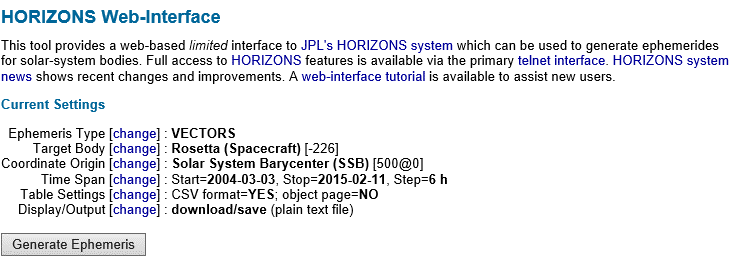
NASA Jet Propulsion Laboratory (JPL) site for downloading trajectory (http://ssd.jpl.nasa.gov/horizons.cgi).
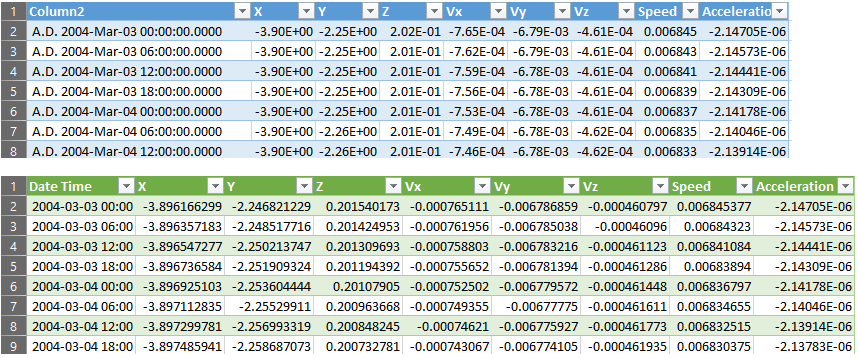
Imported data from the raw csv file in Excel using Power Query to reformat data.
Next, we used the custom map feature in Power Map to replace the global map with our starry background picture.

Change Map Type box.
Power Map plots the X, Y coordinates and we visualized the Z coordinate as a height field. We selected, “Data shows for an instant” to show objects at a specific location and time. For the time accumulation to show paths for all of the orbital bodies we selected, “Data stays until it is replaced.”
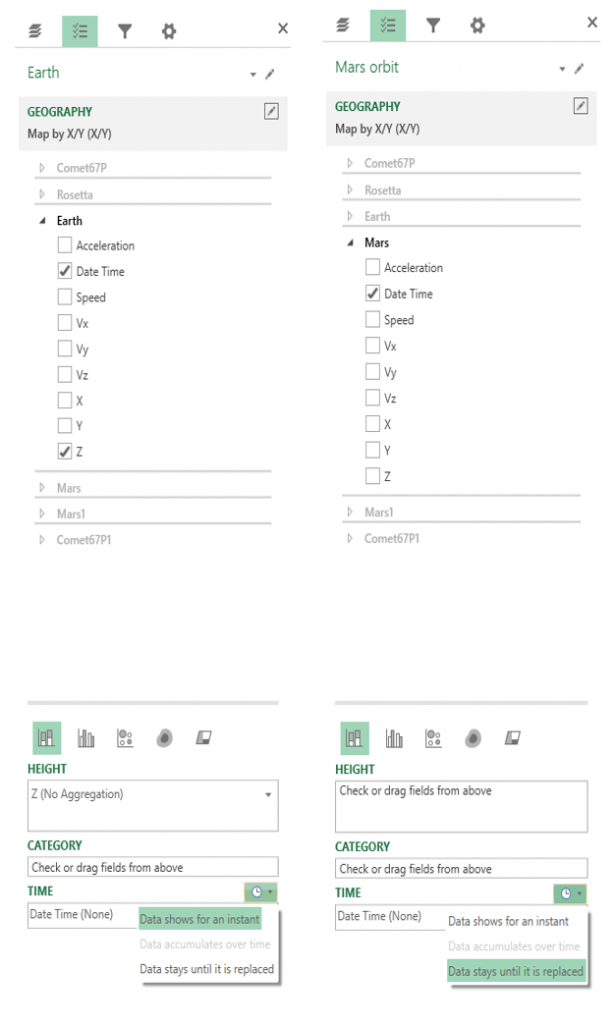
Time accumulation settings in Power Map.
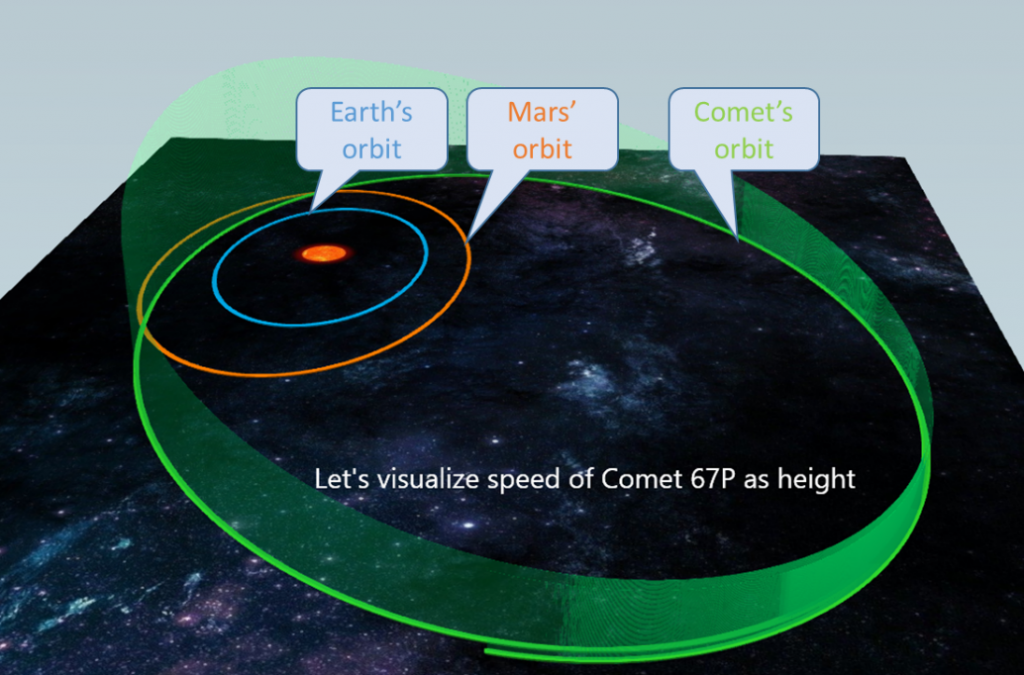
Speed visualized as height in an orbit.
Rosetta’s trajectory crossed Earth and Mars multiple times. Where Rosetta used the gravity of Earth and Mars is unclear, especially if you just look at the numbers in the spreadsheet.
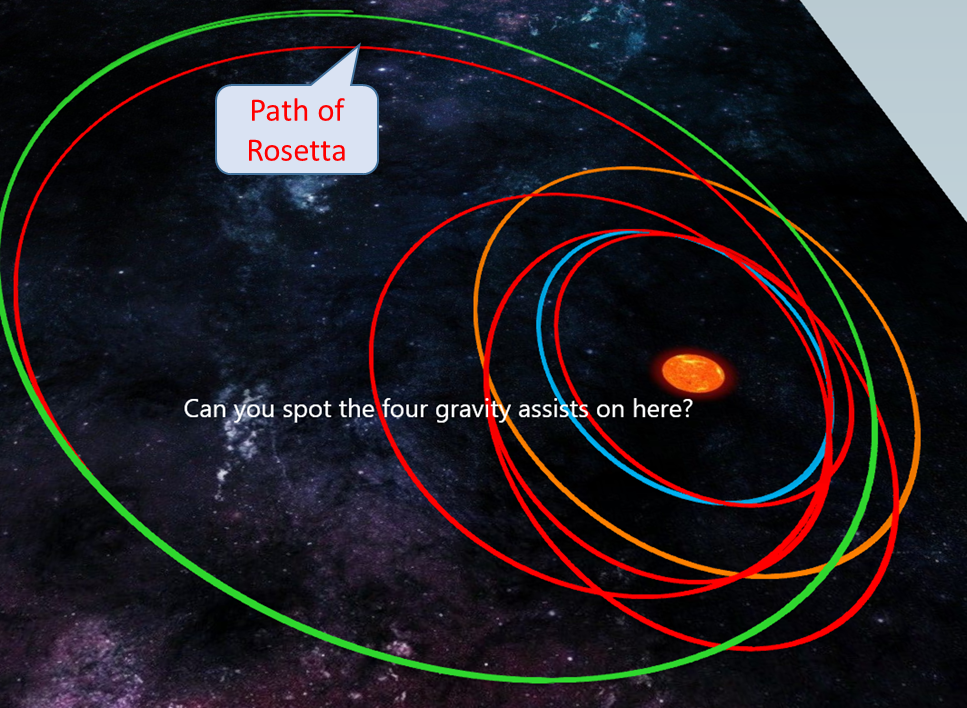
Scene showing Rosetta’s trajectory crossing Earth and Mars multiple times.
The visualization in Power Map shows that Comet 67P speeds up on its approach to the Sun and slows down at the outer edge. In order to simplify this velocity vector, we used a calculated column in Excel to derive the instantaneous speed.
Rosetta uses gravity assists, which alters the speed of the spacecraft, to reach Comet 67P. To show the change in speed associated with the gravity assists, we calculated the change in speed. We can then clearly see the acceleration imparted by gravity assists from Earth and Mars.
Finally, to further explore our work, we used a data card feature to show the dates of the gravity assists.
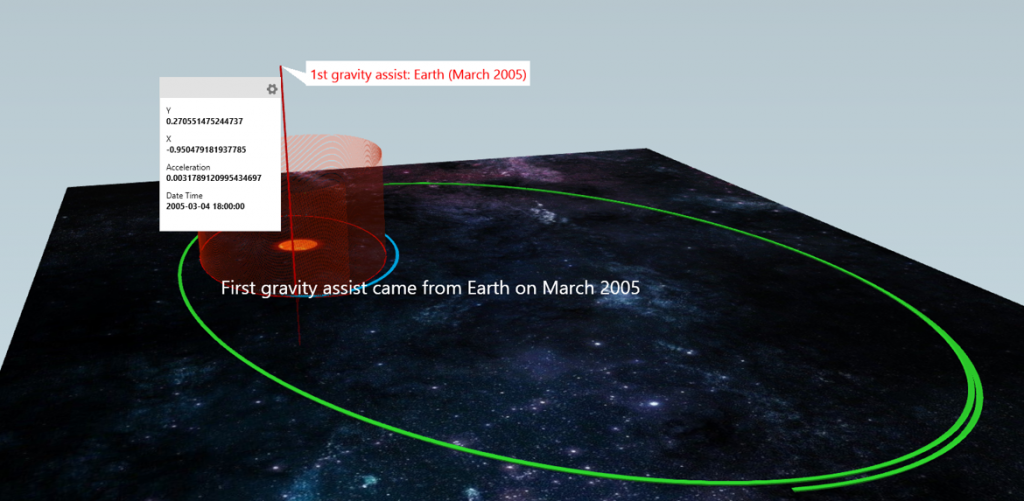
Power Map with a custom data card showing the dates of the gravity assists.
—Thomas Nhan
——————————
Power Map for Excel is available with any Office 365 subscription that includes Office desktop apps. To use Power Map, open Excel and go to Insert > Map.
- Get your Office 365 subscription
- Try Power BI
- Follow us: Facebook and Twitter
